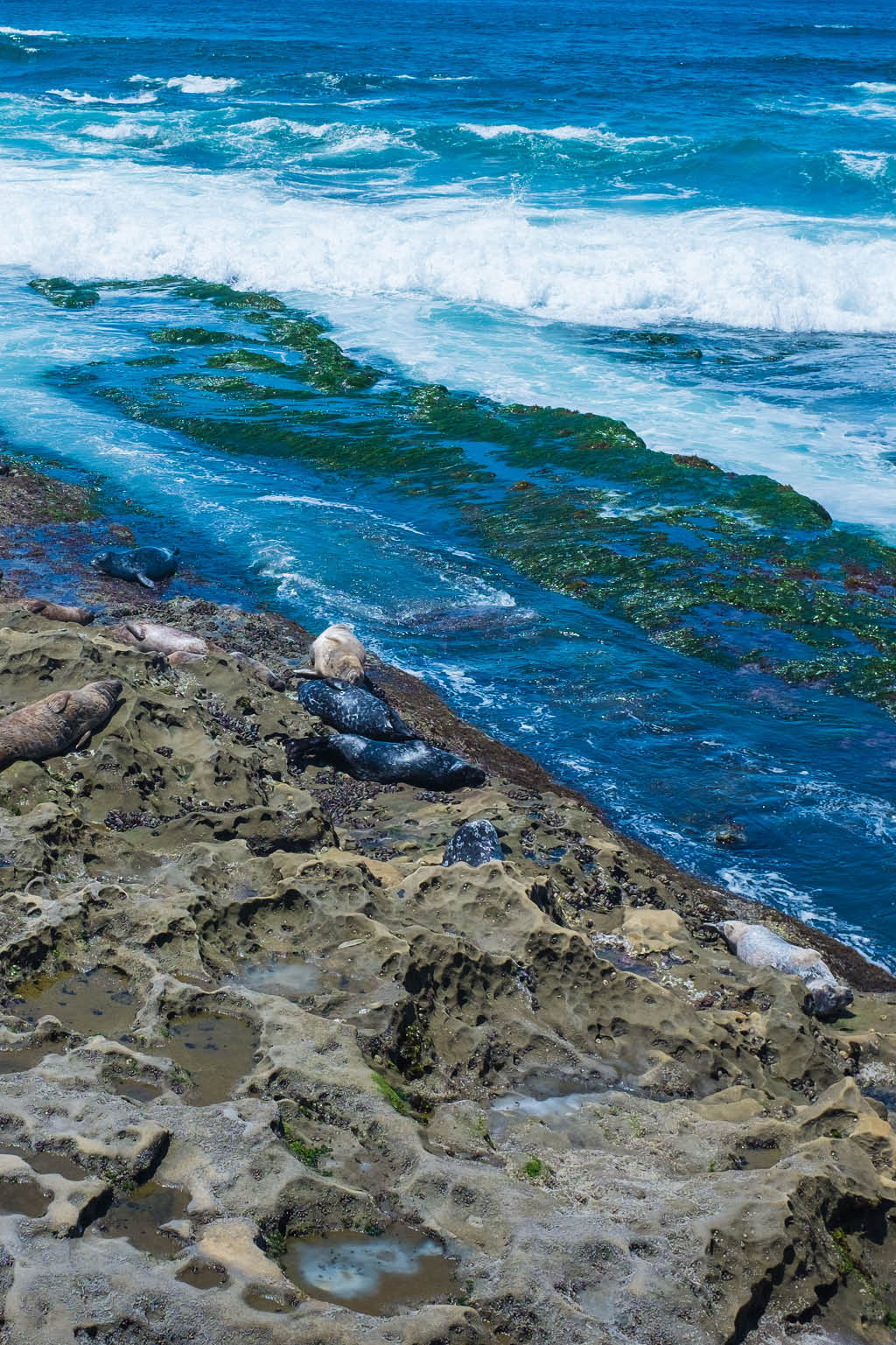The Melody of Sunshine
As my ride cruised toward the Hillcrest neighborhood in San Diego, the twelve-bar blues refrain of an up-tempo Beatles tune bestowed its happiness on my ears like audio confetti. “It’s so fine, it’s sunshine. It’s the word love,” John Lennon proclaimed.
I looked out my open window to see a white Mustang convertible in the other lane with a small, very pleased-looking dog sharing the front seat. “Do you like the Beatles?” I asked my driver, as another classic from the Rubber Soul album began to play. “Oh, I love them! This is my soundtrack all day long,” he replied with a smile. Perhaps the Beatles were right after all—sunshine is love, and I was ready to dig into the happiness of this sun-soaked city.
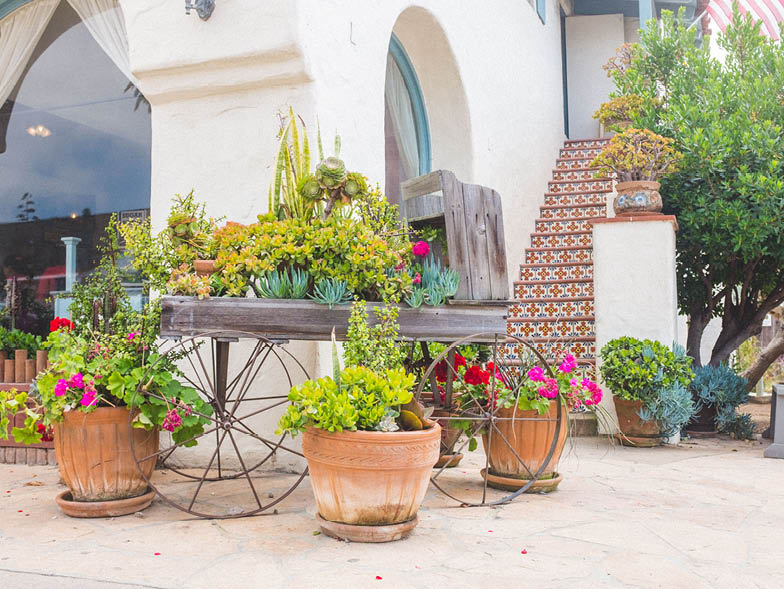
Flora and Food
The car pulled up to my Airbnb, a pink paradise in the form of a Spanish Colonial building with meticulously landscaped grounds. Succulents and assorted fronds cuddled with wildflower blooms in fuchsias and corals. The inviting vignette was shaded by a pair of gently sloping trees, whose foliage resembled seaweed more than leaves. After dropping my bags inside the adobe wonderland, it was time to scout out the food scene.
I was grateful that I had planned to meet up with a friend when we arrived to our dinner spot because there was an hour-long wait. Unfazed, we hopped across the street to a bar-restaurant called Kindred. Inside we found white marble, a gridded ceiling of mirrors, and an iconic sort of patterned wallpaper that looked like the inside of a very posh handbag. We also found a summery pink cocktail with elderflower and Aperol. We shared a freshly baked farinata (chickpea flour) flatbread artfully topped with hearts of palm, mushrooms, and cilantro, drizzled with chili oil.
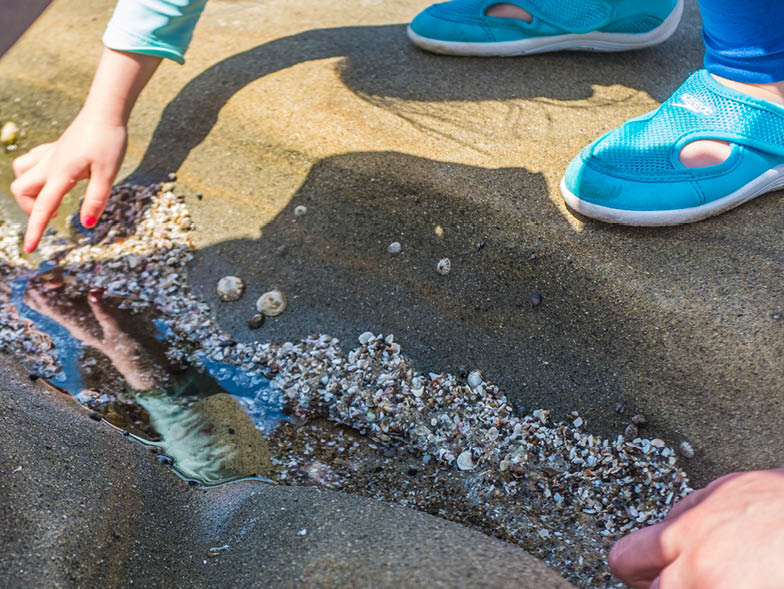
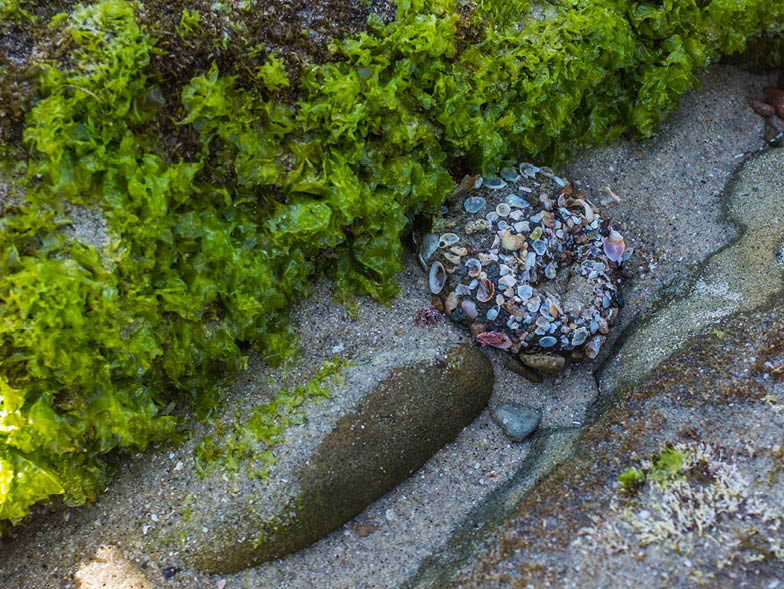
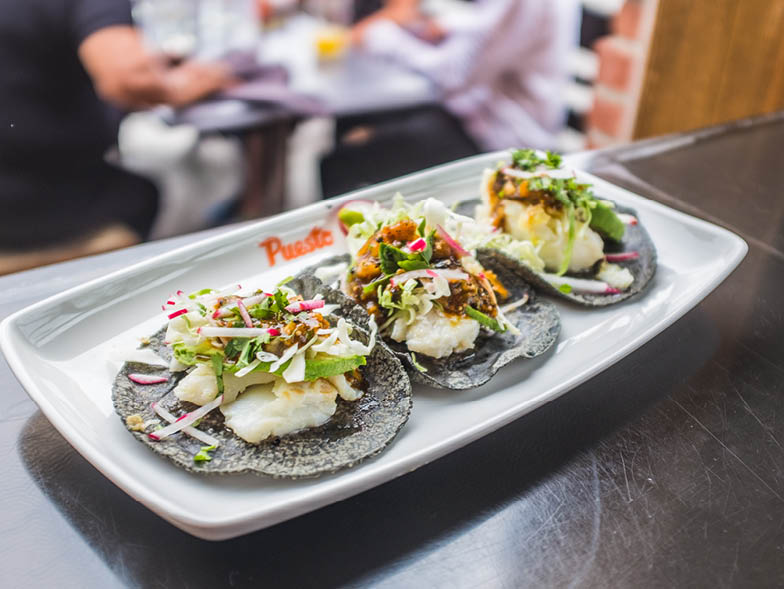
Tide Pools and Tacos
I woke up early the next morning, excited for the tide pool tour I had planned. The idea of peering into nooks and crannies and identifying sea creatures appealed to my nerdy sensibilities, no doubt shaped by childhood summers enrolled in educational museum camps. (Thank you, Mom and Dad.) I met our tour guide, Matt, a former marine biology teacher, at the tide pools in La Jolla, twenty minutes up the coast from the pink adobe. (If you want a slice of paradise, the La Jolla coastline is marvel-worthy, especially when the sunshine burns off the morning fog.) On this day, the low tide was a -.1, which Matt explained means one-tenth of a foot below sea level.
The cratered landscape revealed by low tide is what I imagine it might be like to walk on other planets—the rocky beach slippery in spots and full of both shallow and deeper pools of water, depending on the zone. “Touch this,” Matt encouraged us, as we gently stroked what appeared to be a collection of shell pieces. Underneath the coating of shells was a sand-colored, doughnut-shaped object, and when we poked it, the squishy doughnut creature suddenly contracted as our group collectively exclaimed, “Ack!” The doughnut creature was a green anemone, which covers itself in the shells to avoid desiccation (or drying out) when the tide is low; the beach was also filled with hundreds of thousands of another species of anemones called aggregate anemones.
We were examining acorn barnacles when we heard Matt’s enthusiastic cries of delight a few craters over as he motioned to a large, black, gelatinous blob. The blob inched its body forward, and we could see it was a sea slug—specifically a California black sea hare, named that because of its resemblance (and I use that word loosely) to a rabbit. Because they taste disgusting, they have few predators and are mostly free to grow into even bigger blobs.
Bending over to examine sea creatures is a great way to work up an appetite, and I was on a mission to find tacos, specifically the fish variety. I chose my route up the coast, wanting to catch a glimpse of the seals at the Children’s Pool Beach. The beach was closed to people because of harbor seal pupping season, but the observation walkway was a great way to view them.
A few minutes later, I arrived at my destination, Puesto, which was easy to sneak into as a party of one despite the crowd. Unvexed by the lunch rush, my waiter went above and beyond to accommodate my request for grilled fish tacos and suggested a mango-límon agua fresca to wash it down. After feeling inspired to pen a one-line thank you note to my waiter, I headed down Girard Avenue in search of Trilogy Sanctuary to reconnect with my friend. This rooftop cafe, complete with silks for aerial yoga under the sunny skies, was the perfect place to relax with an orange blossom matcha.

Paraglider Pals
I had starred the Torrey Pines Gliderport on my map, not knowing if it was a place we could even get to. We pulled into the dirt parking lot to check it out, surprised to see that parking was free. “Can we just walk up there?” I asked my friend, as we nervously surveyed the grounds. But the magical thing about the Torrey Pines Gliderport is you really can just walk up there. And suddenly you’re among these paragliders, who very well may be part bird, as they run toward the edge of the cliff, their brightly colored parachutes filling up with air. Watching them float over the cliffs and Black’s Beach is equal parts terrifying and peaceful.
I introduced myself to Ira Hayes, a frequent paraglider and the COO of a tech company. He likes the sport because it’s portable—the parachutes and equipment fit into a (albeit large) duffle bag. He joked that he and other paragliders carry their emergency parachute onto commercial flights in case something goes wrong. “If I can get out of the plane, I’m good,” he joked.



Old Town Origins
When I woke up the next morning, I entertained the idea of solely eating tacos for the rest of my trip. I knew a history lesson would be more valuable, though, and our tour guide, Deborah Seitz of Experience San Diego Tours, certainly delivered with her engaging stories and contagious enthusiasm for the subject matter. Most of our tour took place in the Old Town State Historical Park, which is within the Old Town neighborhood. The park is a collection of buildings and homes from the nineteenth century, either original or replicated, that give visitors a glimpse into what the original square might have looked like and how the community operated.
In fact, San Diego is one of the oldest, most history-rich cities in the country. Historically home to the Kumeyaay Nation, it would eventually become the first colony in California. Juan Rodriguez Cabrillo became the first European to set foot on the coast of California, in search of gold and a rumored water route that would connect the North Pacific to the North Atlantic oceans. However, colonization of San Diego was eventually prompted by Russian fur traders, who were working their way along the coast from Alaska. The king of Spain ordered the Spanish settlers in Mexico to start moving north in order to mark the territory. In 1769, the first colony was established, and the first mission on top of Presidio Hill was built.
Deborah led our trio to an impressive, white adobe building known as La Casa de Estudillo, one of the most famous buildings built during the Mexican era in the early 1820s. The Estudillos were a very prominent family in the 1800s and early 1900s, as evidenced by the virtual adobe castle that was situated in front of the main square. They hosted parties, community events, and even Catholic Mass here. The original structure still stands and is free to tour.
It’s also one of the settings of a famous novel written in 1884 by Helen Hunt Jackson, a passionate advocate for the Mission Indians. The success of Ramona made La Casa de Estudillo a popular tourist attraction.
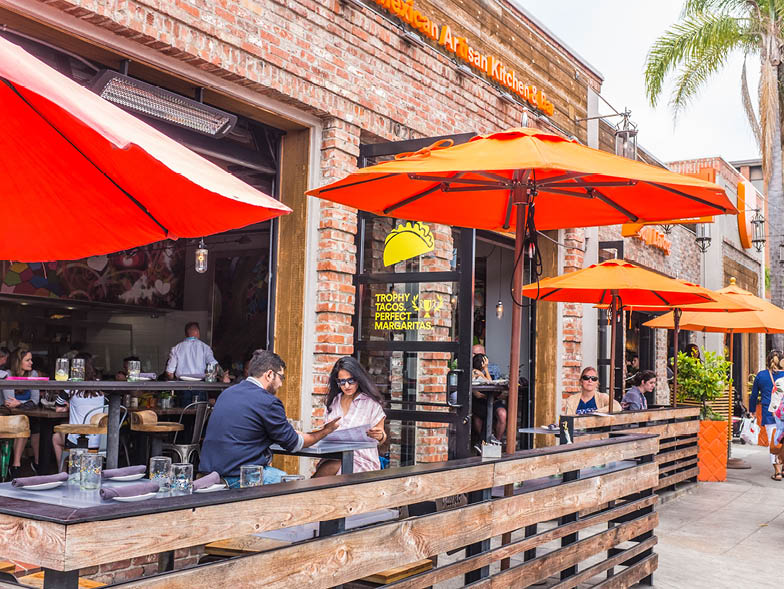
Fajitas Al Fresco
After thanking Deborah for the tour, I made my way to Miguel’s Cocina for a late lunch. As I sat on the front patio, shoveling tortilla chips and salsa into my mouth and gazing adoringly at the sizzling vegetable fajitas in front of me, the lyrics of that Beatles song came into my head. The beauty of La Jolla’s coast, the fresh seafood, the rooftop coffee with a view, the happiness from my tour guides who have been able to make a career out of enjoying their city—I admire the way locals inhabit and share their inner happiness so freely with others. In the words of another Beatles song, “Here comes the sun, and I say it’s all right.”
For more info, visit sandiego.org
